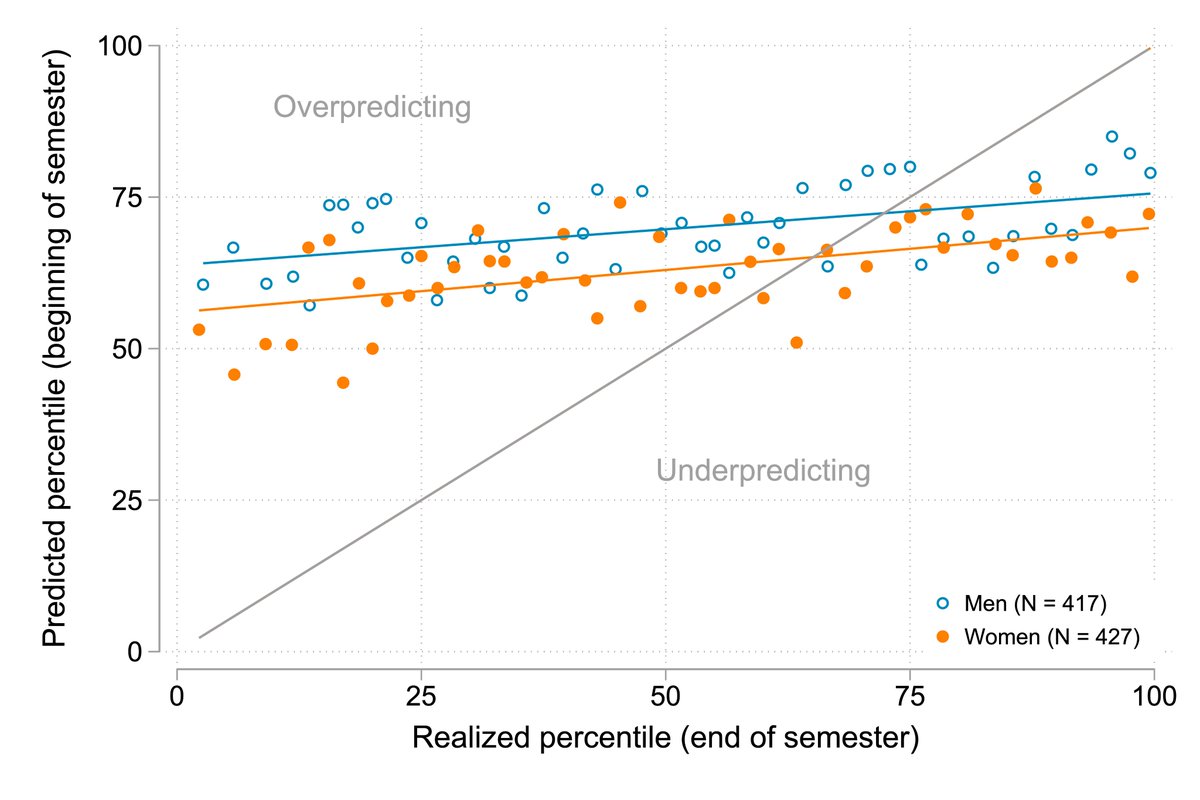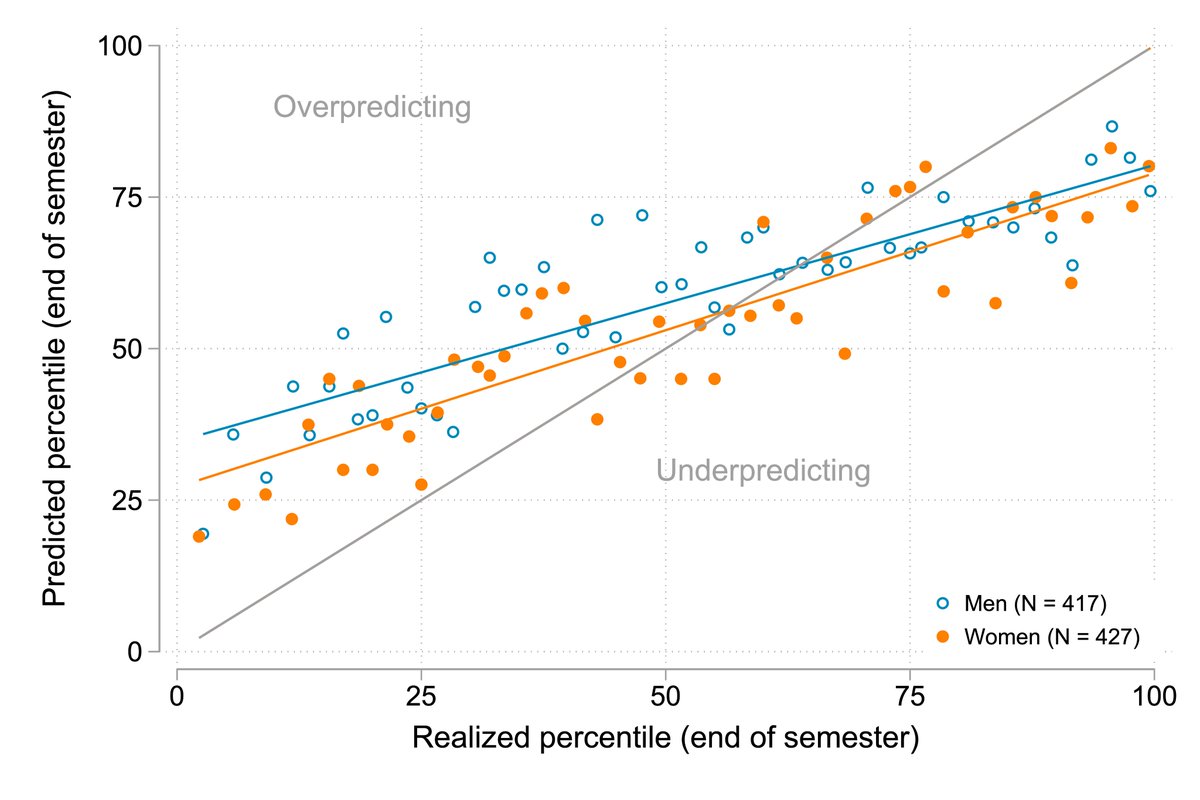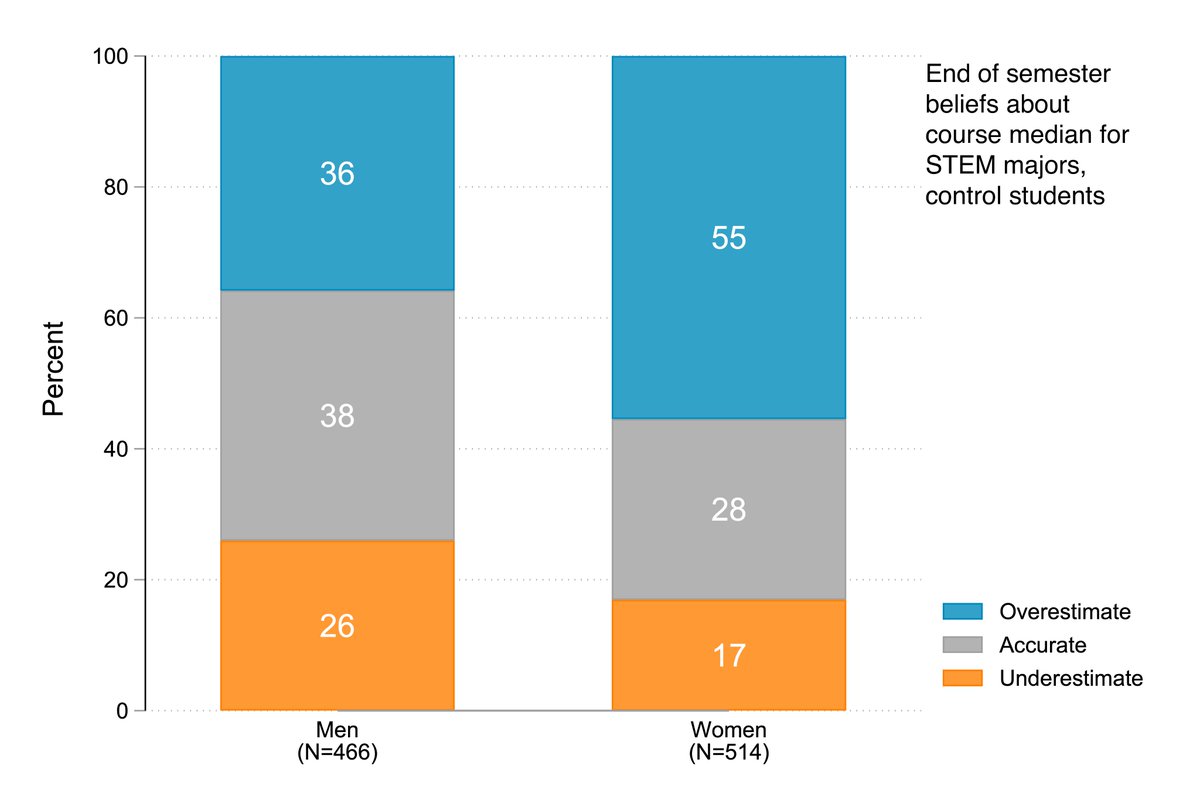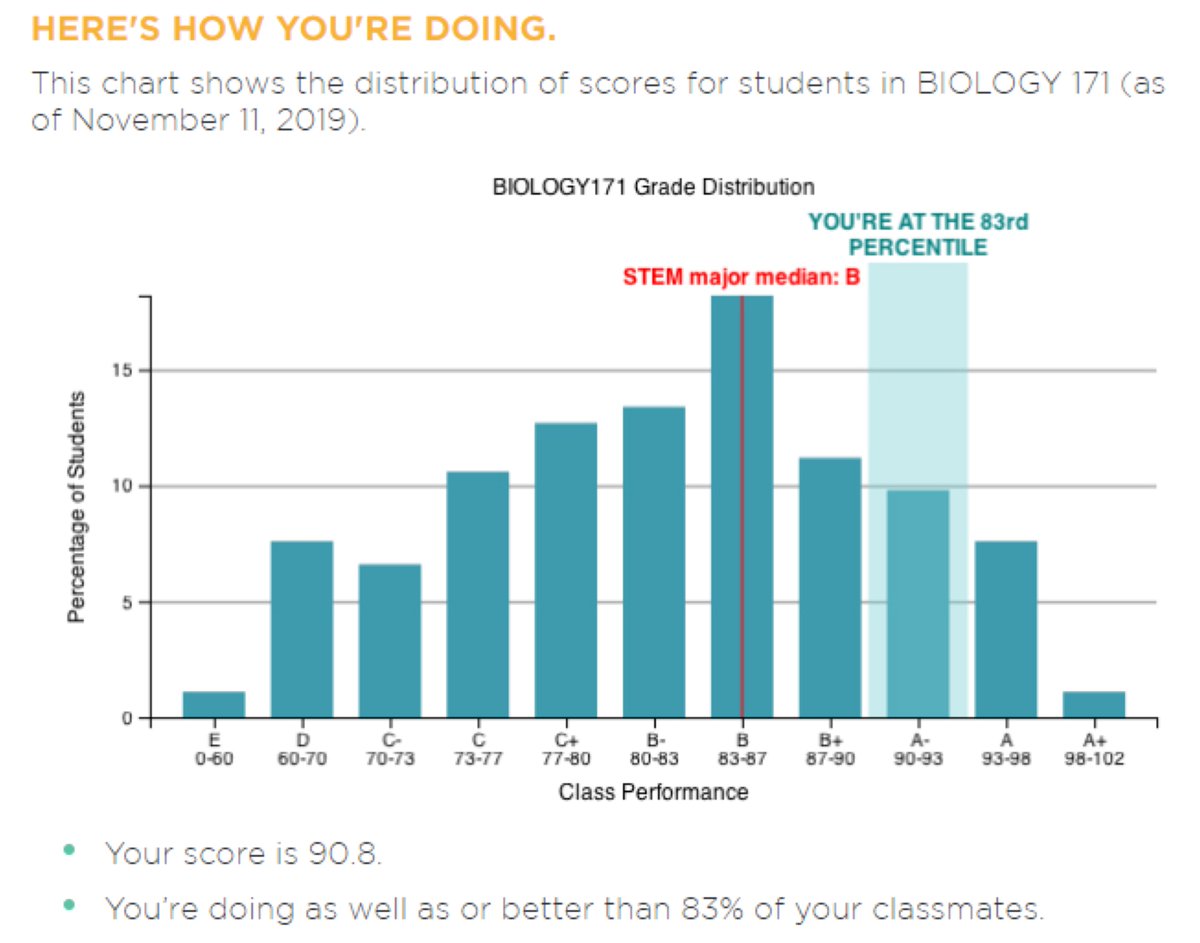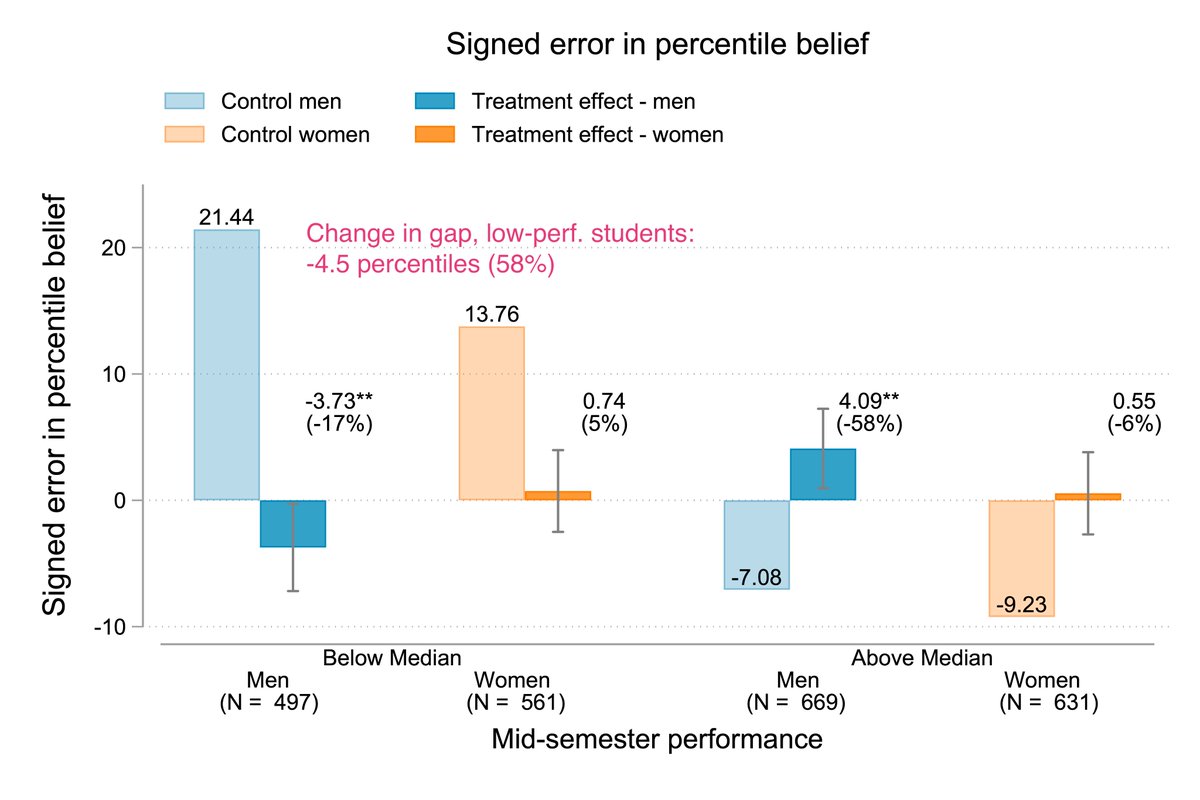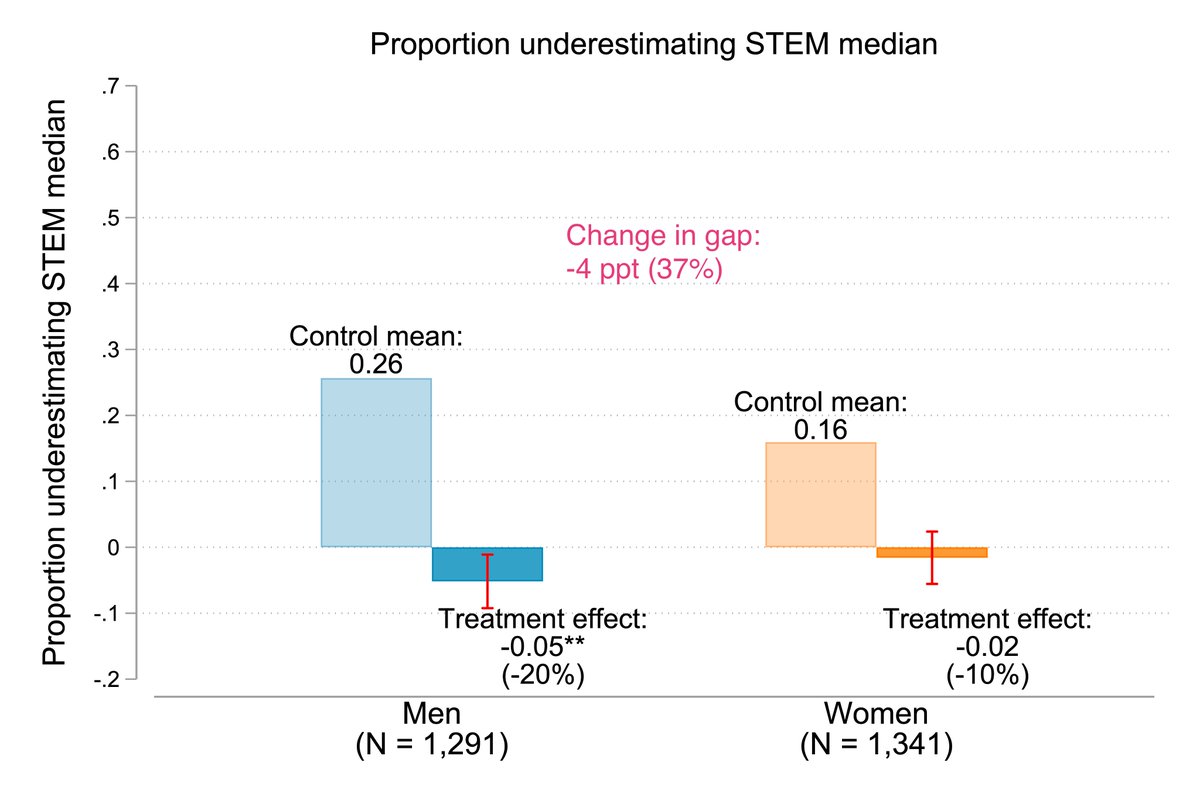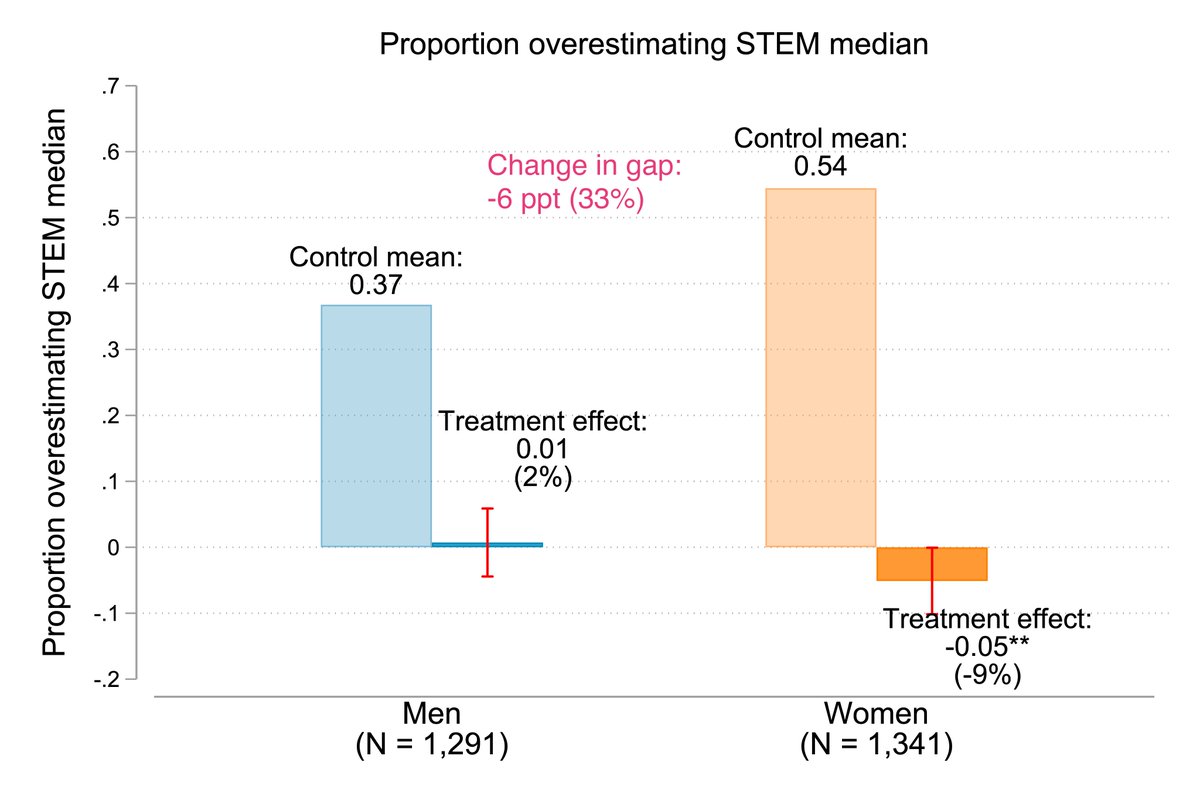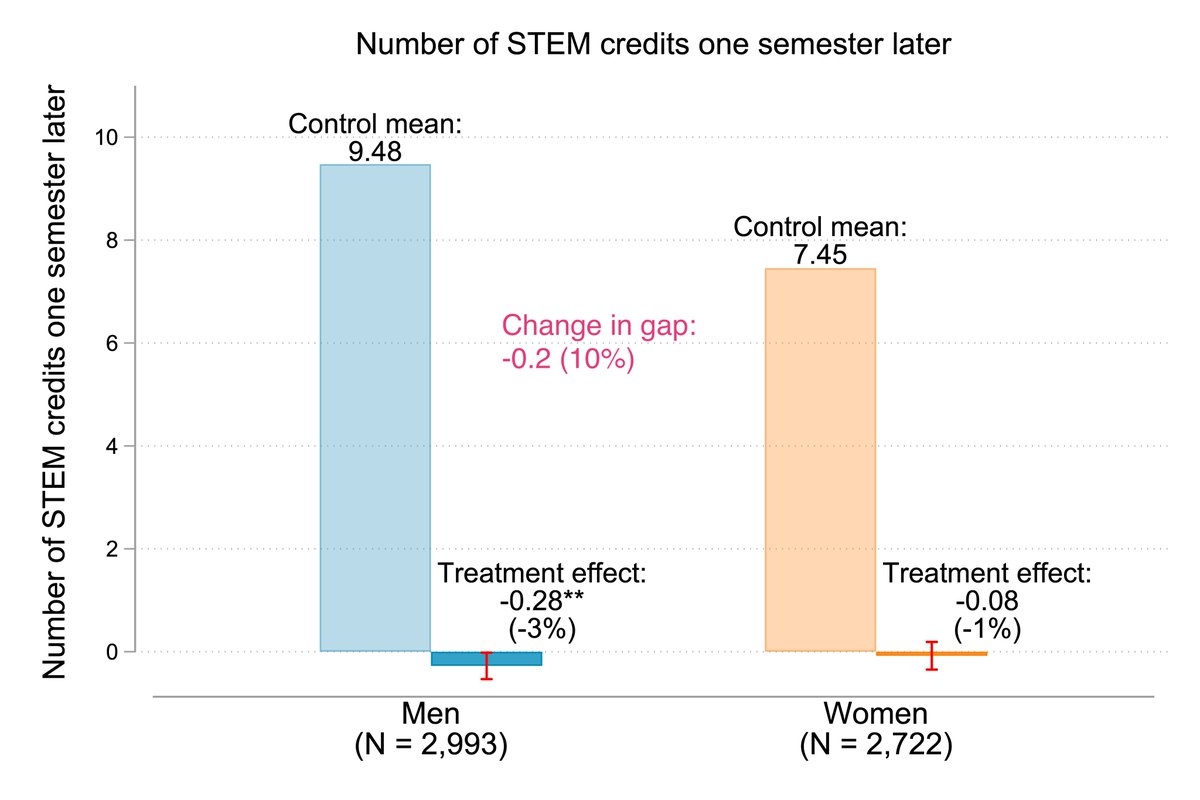Hi #EconTwitter, time for a job market thread! I’m a PhD candidate in economics & public policy at @UMichEcon & @fordschool. I’m interested in understanding educational inequality along various dimensions, especially gender and socioeconomic status. (1/) http://sites.google.com/view/stephanieowen
All my work uses admin data and causal inference methods, and I’m especially interested in designing field experiments to address behavioral barriers in educational decisions. (2/)
My JMP is motivated by stubborn gender gaps in STEM enrollment and persistence. I run an RCT across 7 large intro STEM courses at the Univ. of Michigan to isolate a possibly important mechanism: beliefs students have about their academic performance. (3/)
https://stephanieowen.github.io/OwenStephanie_JMP.pdf
https://stephanieowen.github.io/OwenStephanie_JMP.pdf
My intervention provides students w/ info about their relative performance in STEM. I tell them their percentile rank in the class and the median course grade for students who go on to major in STEM. (4/)
I combine UM admin data on students’ backgrounds and academic choices with novel survey data about their beliefs.
I first show that control men & women have very different beliefs about relative performance, even conditional on actual performance. (5/)
I first show that control men & women have very different beliefs about relative performance, even conditional on actual performance. (5/)
At the start of the semester, all students are on average somewhat overconfident in how they’ll do, but men overpredict by more than women. Students update over the semester as they learn about their performance, but low-performing men remain especially overconfident. (6/)
There are also big gender gaps in where students think the “bar” for STEM is. Men set the bar too low (underestimate STEM median), while women set it too high (overest. median). This also implies relative male overconfidence and female underconfidence. (7/)
My intervention attempts to correct these biased beliefs by telling students where they fall relative to their classmates and relative to STEM majors. (8/)
As a result of the intervention, overconfident, low-performing men correctly update their beliefs about their percentile downwards, while high-performing men update upwards. Women don’t seem to change this belief. (9/)
The intervention also closes gender gaps in beliefs about the selection into STEM. Men correct their overconfidence while women correct underconfidence. (10/)
As a result, men take fewer STEM credits in the next semester, and I don’t see a change for women. Gender gaps in STEM enrollment shrink by 10%, seemingly driven by overconfident, low-performing men updating beliefs + behavior rather than by encouraging underconfident women. (11/
I conclude that biased beliefs about relative academic performance do explain some of the gender gap in STEM, but I find evidence for male overconfidence rather than female underconfidence as the driver. (12/)
This is the first experimental evidence on this mechanism. Prior work had hypothesized that gender differences in beliefs were important, but couldn’t causally isolate it. (13/)
I’ll continue to follow this sample of students and answer some important questions about what these results imply for welfare: what do discouraged men study instead? Did the info just accelerate their exit from STEM? Are slots freed up by men leaving? (14/)
In future work, I also want to explore explanations for why women’s behavior doesn’t change in response to this info. Strong contenders include: comparative advantage and lack of info about STEM fields and careers. (15/)
If you made it this far, read the full paper here:
https://stephanieowen.github.io/OwenStephanie_JMP.pdf
Thanks for reading and please hire me!


(16/)
https://stephanieowen.github.io/OwenStephanie_JMP.pdf
Thanks for reading and please hire me!



(16/)

 Read on Twitter
Read on Twitter